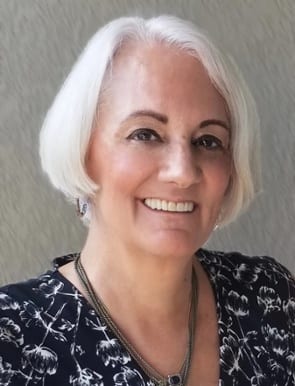Orlando is ranked one of the top cities for technology growth, according to TIME magazine, which gathered data from ZipRecruiter. Thanks to organizations like the Orlando Tech Association (OTA), the City Beautiful is carving out its rightful position in the technology landscape. At the helm of this progressive organization sits Diane Court, Executive Director of OTA. With an impressive resume, which consists of serving as a business coach and start-up advocate, Diane plays an instrumental role in connecting Central Florida’s established organizations and startups to support their overall business objectives.
 Recently, we had the unique opportunity to interview Diane, not just about technology in Orlando, but about key drivers across the Southeast. Her viewpoints were insightful and also pointed to overarching trends to watch for in 2018.
Recently, we had the unique opportunity to interview Diane, not just about technology in Orlando, but about key drivers across the Southeast. Her viewpoints were insightful and also pointed to overarching trends to watch for in 2018.
What first piqued your interest in tech and drove you to get involved in this market?
While I’m not a technologist by background (I typed my first computer message on a network linking New England Colleges in 1972!) I’ve made my career helping clients leverage technologies to grow their organizations and their business. I’ve long appreciated Richard Florida’s work on the creative class, and ever since moving to Orlando, from Washington, D.C., I could feel the potential of the region.
At first, I was surprised by the isolation of our strongest clusters in silos. Early-stage tech companies weren’t connecting with enterprise companies. And the latter, while major employers in the region, didn’t consider Orlando “home” – they were outposts. People in Orlando didn’t know a lot about nearby markets like Tampa or even Miami, and vice versa. The ecosystem for startups was “thin” in those days.
From about 2009 forward I saw a community taking shape and felt a part of it. I started attending meetups in my areas of interest and found they connected to others. So, I sought out bar camps and lectures, then every tech, startup, and innovation workshop, meetup, and “coffee talk” I could. In Orlando, but also in the Tampa Bay area and on the Space Coast. All eventually leading to volunteering many hours for Orlando Tech.
Describe the current business landscape and talent make-up in the southeast region of the U.S.
I sincerely believe that we’ve seen a dramatic change in the rigidity of silos and gaps that previously characterized the Central Florida landscape are disappearing. We have more accelerators and incubators, more co-working spaces, more tech companies – large and small – and more overall focus and action on the ingredients necessary to make the region a significant tech hub. These kinds of activities that stretch from Miami to Atlanta to our Space Coast, the Panhandle and beyond, are now getting recognized. Companies are starting up across the Southeast, and others from outside the region are testing the waters with satellite offices. The talent pool is growing, too. The University of Central Florida is a top-10 research university. Coding schools and boot camps are popping up all over, and there’s a plethora of MBA programs with heavy emphasis on technology and innovation. The training and opportunities for those involved in creative services such as graphic design, branding, marketing, etc., is also blossoming.
What are some of the biggest tech trends that you are seeing in the southeast region? What do you expect 2018 to look like?
Well, I think one can see now some of the same national trends playing out in the Southeast. Take, for example, virtual/augmented reality, drones, big data and IoT. There’s also a growing interest and work in blockchain business applications. Where I think you are going to see our region particularly stand out going forward is in areas such as FinTech, gaming, simulation, lasers, energy tech, and health tech.
Are there specific companies headquartered in the southeast that you are keeping a watchful eye on over the next few months?
Yes, there are a few that I watch closely as they are bellwethers of where other companies may bloom, where investments may flow, and where talent will cluster. I pay close attention to Magic Leap in South Florida because of their technology and investment from Google. Luminar Technologies I like to keep tabs on because they have a foot in Orlando as well as Silicon Valley. They also recently did a deal with the Toyota Research Institute. The Space Coast has also rightfully earned national attention again. OneWeb announced plans to launch 900 satellites, Elon Musk’s SpaceX is building its own rockets for its satellites, and Jeff Bezos’ Blue Origin’s plans are also especially exciting.
In Miami, you’ve got CareCloud with their Practice Management and Electronic Health Record system that has attracted multiple rounds of investment, including $20 million from Intel Capital a few years back. Origis Energy, founded in 2008, just got $100 million in private equity funding last year for its solar electric play.
Atlanta, the “Silicon Peach,” can boast of its designation as a top-25 tech city in the U.S. Cardlytics, a marketing analytics startup in Atlanta, filed a confidential S-1, a precursor to going public; they’ll certainly be one to watch. Kabbage, the technology platform for small business loans, has raised nearly $500 million in funding. That’s a lot of, err, lettuce. Watch them closely and the trends they will set.
What are the biggest advantages that the southeast tech market has over other regions?
I could say, weather, weather, weather! The fact is that the weather, proximity to beaches, and major entertainment venues and sports stadiums, are all advantages. Our tech and creative workers want places to go to and things to do when they aren’t working. Lower taxes and a lower cost of living benefit both growing companies and their employees. World-class universities dot the whole region. World-class airports play a part, too. Our access to local capital is often cited with cause as one of our biggest challenges for early stage companies to take roots here. However, we have a growing class of investors just as we begun to attract increasing attention from more established centers.
What is the most common misconception that you run into regarding the southeast tech market?
Don’t get me started! But, in fact, as one New York-based investor recently said to me, Central Florida is rich in unrecognized opportunity. Coast to coast, the Corridor offers a continuum of pluses, from growing talent and career options, to great places to live, to a multitude of reasons to start and grow innovative companies and increase our “magnetic attraction” to keep smart people and smart companies here in the Southeast and bring others to us.


